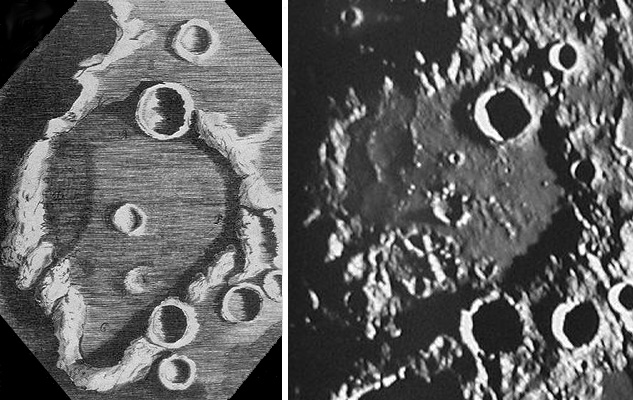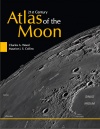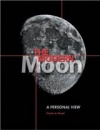|
|
| Line 13: |
Line 13: |
| | <table width="100%" border="0" cellpadding="8"> | | <table width="100%" border="0" cellpadding="8"> |
| | <tr> | | <tr> |
| − | <td><div align="center" span class="main_sm"><p>Image Credit: <i>Ingenious Pursuits & Consolidated Lunar Atlas</i></div></td> | + | <td><div align="center"><p>Image Credit: <i>Ingenious Pursuits & Consolidated Lunar Atlas</i></div></td> |
| | </tr> | | </tr> |
| | </table> | | </table> |
| | <table class="story" border="0" bgcolor="#FFFFFF" width="90%" cellpadding="10" align="center"><tr><td> | | <table class="story" border="0" bgcolor="#FFFFFF" width="90%" cellpadding="10" align="center"><tr><td> |
| | <p class="story" align="center"><b>Hooke & Hipparchus</b></p> | | <p class="story" align="center"><b>Hooke & Hipparchus</b></p> |
| − | <p class="story" align="left">The earliest drawings of the Moon were of the ["LPOD-2004-01-01.htm" entire body]. By 1665 Robert Hooke, the | + | <p class="story" align="left">The earliest drawings of the Moon were of the ["LPOD-2004-01-01.htm" entire body]</p></div></td> |
| − | English rival of Isaac Newton, published (in his Micrographia) the first drawing of a single feature, and it was
| |
| − | remarkably accurate. The comparison of Hooke's drawing of the 150 km wide crater Hipparchus with a modern photo taken
| |
| − | with a 61" telescope (Consolidated Lunar Atlas sheet E10) shows that Hooke correctly drew many details including two
| |
| − | mountainous ridges at the bottom left. Hooke also shows a shadowed arc on the left side of Hipparchus that represents
| |
| − | part of a ghost crater and various small hills. Hooke make this drawing with a 30 ft focal length telescope but he never
| |
| − | gave the diameter of its lens. He was a very keen-sighted observer, discovering that Jupiter rotates and discovering
| |
| − | Syrtis Major on Mars. Hooke was one of the most versatile scientists of the 17th century - I eagerly await the new
| |
| − | biography of him by the wonderful author Lisa Jardine.
| |
| − | </p> | |
| − | <p class="story"><b>Related Links:</b><br>
| |
| − | [http://www.lpi.usra.edu/research/cla/info/e10/ Consolidated Lunar Atlas image]<br>
| |
| − | <i>Ingenious Pursuits</i> by Lisa Jardine, p 63-65, Doubleday, New York, 1999.<br>
| |
| − | [http://www.roberthooke.org.uk/leonardo.htm England's Leonardo - Robert Hooke]</p>
| |
| − | <p class="story"> <b>Tomorrow's LPOD:</b> Theophilus</p>
| |
| − | </table> | |
| − | <!-- start bottom -->
| |
| − | <table width="100%" border="0" cellspacing="2" cellpadding="4">
| |
| − | <tr>
| |
| − | <td><hr></td>
| |
| | </tr> | | </tr> |
| | <tr> | | <tr> |
Revision as of 15:38, 18 January 2015
Hooke & Hipparchus
Image Credit: Ingenious Pursuits & Consolidated Lunar Atlas |
|
Hooke & Hipparchus
The earliest drawings of the Moon were of the ["LPOD-2004-01-01.htm" entire body] |
Author & Editor:
Charles A. Wood
Technical Consultant:
Anthony Ayiomamitis
A service of:
ObservingTheSky.Org
Visit these other PODs:
Astronomy | Mars | Earth |
Register, and click on the Discussion tab at the top of the page.




